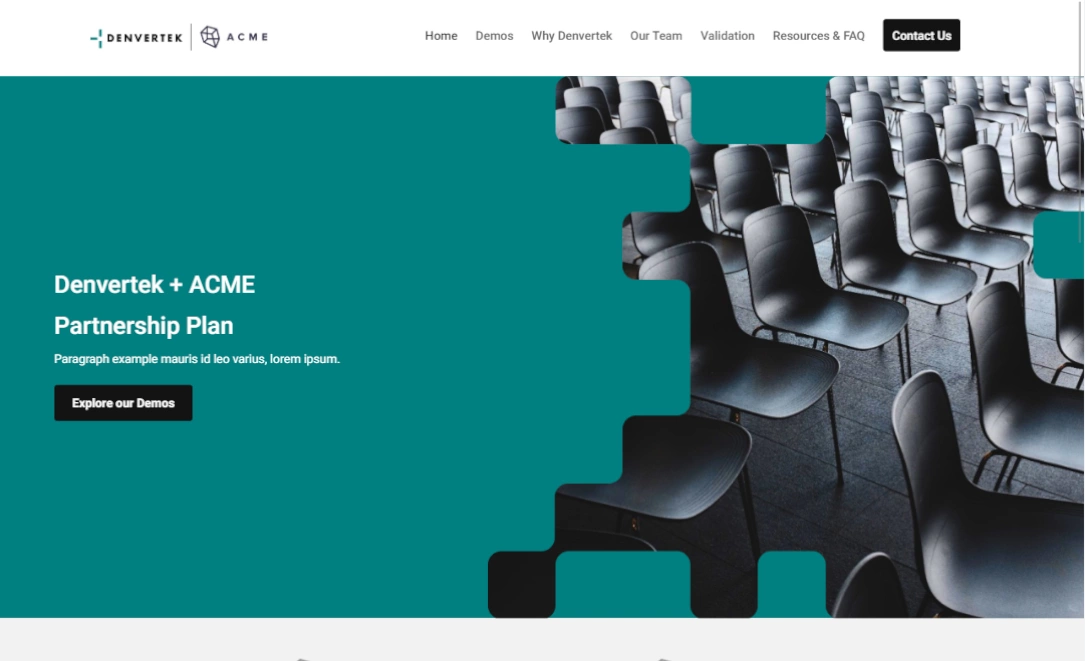B2B sales may seem like a dizzying game. As opposed to B2C sales, the buyer’s journey here takes a lot longer, requiring a lot more patience and hands-on action. It may seem complicated, but it certainly doesn’t have to be! Getting through the different stages of the B2B sales cycle is a lot simpler than you’d think if you know the common stages and have the right strategies to support them.
Here’s how your business can bump up revenue in a few simple steps.
The 7 stages of the B2B sales cycle and how to improve them
Stage 1: Kickstarting B2B sales with lead generation
Before you can have clients, you’ll need leads! Lead generation is the process of collecting potential clients for you to work with. While vital to the early success of your B2B sales, lead generation must be maintained and expanded as you scale up.
While it may not be the most attractive part of the B2B sales cycle, it’s arguably the most important because it helps your team grow its activity rate. Even those of us who aren’t really “numbers people” can guess that having more client opportunities means more potential clients.
Generating more leads can sometimes be an easier-said-than-done part of the end to end sales process, which is why many businesses turn to tools that help them streamline the process.
Here are a few ways businesses can improve their lead-generation process:
- Diversify your lead sources: Growing your lead portfolio and expanding your marketing strategies are two easy ways to tap into new markets.
- Invest in a CRM: Customer relationship management software (CRMs) are mostly known for lead management, but many also offer features for lead generation that comes in the form of lead capture tools.
- Update lead-facing material: Using highly relevant, action-driven tools for communicating with potential leads is one easy way to incorporate targeted CTAs that move leads to fill out contact forms or sign up for email subscriptions.
Stage 2: Easing into the B2B sales cycle with discovery calling
If the B2B sales cycle had the equivalent of a meet-cute, discovery calling would be it.
Your discovery call is the very first conversation you’ll have with a potential client that has shown interest in what you have to offer. While you can assume that your lead has expressed interest because they believe there is a problem you can help them solve, the discovery call is not the time for your team to jump in with a hard sell.
More than anything else, this stage of the sales cycle is a listening exercise. Dedicate this early part of your relationship with your client to understanding them and unfolding different layers of their problems.
It’s a really important part of building rapport with your lead, making them more likely to accept meeting invitations and answer questions, which are crucial parts of growing your conversion metrics.
Here are a few ways you can make discovery calls a success:
- Go into it prepared: Do your research! Who is your client, and what are some exciting projects they’ve recently worked on? Dig around on Linkedin, their company website, or their social media so you can tailor your approach. A discovery call shouldn’t feel like a cold call.
- Make room for small talk: It may not be fun for the first few seconds, but warming your lead up and starting a genuine, relaxed conversation can change the tune of the call from the get-go.
- Ask open-ended questions: Sales 101 states a yes or no question is guaranteed to be a dead end. Before you hop on your call, make a list of questions and think hard about what sort of answer your client will give you.
Stage 3: Qualifying leads for the deeper stages of the B2B sales process
Not all leads are good leads. Making good judgment calls about which leads are worth investing in is an important part of knowing where, when, and how to allocate your resources. These resources include anything from the materials you share, the time you spend, or the manpower you’re allocating.
Lead quality affects two different metrics of your B2B business’s sales process metrics: your conversion rates and your average deal size.
Spend time scoring the leads you’ve gathered by creating a valuation system that helps you determine how valuable a relationship with your prospect is.
Here’s how you can start scoring your leads to determine whether they are high quality or not:
- Track their engagement: Knowing what your client is engaging with can help you understand which stage of the B2B sales funnel they are in. If someone is still only exploring preliminary information about your business, they’re sitting at the top of the funnel and your warming approach may just be starting. Instead, focus your resources on leads closer to the bottom of your funnel.
- Look for long-term interest: Grow your average deal value by looking for leads that are interested in long-term service.
Stage 4: Elevating your B2B sales with a stellar pitch and product demo
Now that you’ve determined and established a strong working relationship with your prospective client, it’s time for you to take steps toward closing. This is where your pitch will come in! Your pitch will outline what services and products you can offer your client to help them solve the problem they’ve outlined to you. It should be focused, well-researched, and highly personalized to your client. A one-size-fits-all pitch can throw your hard work out the window.
This is the time for you to show your client you have an in-depth understanding of their pain points. It shouldn’t just show your client that you have what they need to help them solve their problem, though. It should show you have a game plan.
Outline a plan of action for your client, showcasing metrics for success and improvement along the way. While it may be tempting for you to pull out the big guns and show off, keeping your proposal tailored to your client’s needs narrows the funnel and can make the decision-making process a little faster.
If you want your conversion rates to improve, you should consider elevating your pitching strategy:
- Make it personal: The more customized your sales pitch is for your client’s needs, the better! Try not to break the bank here, though. A simple microsite template for your sales pitches that are customized with your client’s branding is the perfect way to create a proposal that’s accessible, elegant, and effective.
- Keep your approach focused: Emphasize the most important and relevant information throughout by quoting only for services they are interested in.
- Establish trust: Include relevant case studies and client testimonials to show your client that you’ve been there and done that. It’s reassuring to know that others have seen success with what you have to offer.
Stage 5: Following up regularly ensures continuity in the B2B sales cycle
Follow-up is crucial, whether you keeping leads warm or ensuring that existing clients are happy with the services they are receiving. It shows your commitment to service and satisfaction, cultivating a lasting relationship between you and those you serve.
There is, of course, a fine line between effective and ineffective follow-up. Ill-timed strategies can feel like they bombard clients, and follow-up that is too sparse can make it hard to get the ball rolling again when it’s time for another client-facing meeting.
Luckily, there are a few ways to master the art of follow-up:
- Use data to help you time the perfect follow-up communication. Knowing when your clients open your client-facing material is a game changer. It makes it possible for you to email or call after they’ve engaged with what you’ve sent them so you don’t jump the gun.
- Tailor your follow-up to include what they don’t know. Losing a sale because your client didn’t know you offered x, y, or z service is a truly unfortunate way to lose revenue. Knowing what your clients are engaging with means you get to send them over what they don’t already know!
Stage 6: Negotiating and objection handling to pivot the B2B sales cycle
You may not hear yes on the first try, and that’s okay! Objection and negotiations aren’t indicative of a lost sale—they’re an opportunity to pivot.
Like discovery, this part of the sales process cycle involves a lot of listening. Make your prospect feel heard and be ready to field questions they may have with open ears and tailored solutions.
While this can be a frustrating part of the sales cycle, there are some ways to get ahead of it:
- Stay informed: Use metrics and engagement data from your digital sales proposals to help you tailor your negotiation strategy. While it may not get easier to “lose,” understanding why your proposal wasn’t accepted can minimize the blow and make your rebound more effective.
- Bring in some muscle: Get your account executives and sales development representatives to help you out. Bounce ideas off of them, or bring them along to see their approach in action.
Stage 7: Closing the deal is crucial to the entire B2B sales process
Eureka, you’ve done it!
This is the best part of the sales cycle. You finally get to see all of your hard work pay off. Closing your deal is the bottom part of the funnel, and where you finally get to determine what your revenue is after putting in all your time and effort.
Keep this part pain-free and streamlined, if you can! Here’s how you can make the most of the last part of the sales cycle:
- Get your client everything they need. Forwarding over a ton of emails with attachments is not going to get you signatures quickly and may breed the opportunity for miscommunication. Send everything over in one, easily accessible format, like a microsite.
- Ensure security. Starting your relationship with a data breach is not ideal. Ensure all negotiations, contracts, and agreements are secured with multifactor authentication, SAML log-on, or password protection. Zoomforth microsites have all of these features and then some.
Let Zoomforth help you through all the B2B sales cycle stages
Getting through the sales cycle with success is a whole lot easier when your sales team has the right tools to help them succeed.
A microsite platform that allows them to engage with client success is the perfect way for your team to make the process just a little more simple. It’s the tool that makes their job a whole lot easier and makes your clients a whole lot happier.
Get your revenue growing today with Zoomforth.
Photo by Blake Wisz on Unsplash



